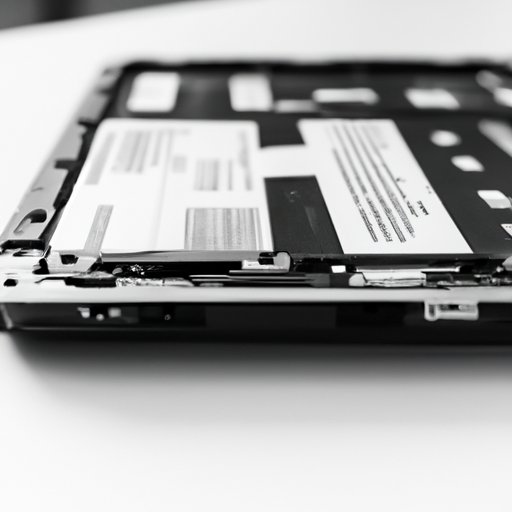
Introduction
Are you experiencing issues with your MacBook Pro? Perhaps it’s running slow, freezing, or crashing frequently. Whatever the issue may be, a factory reset could be the solution. A factory reset can help solve software issues and give your MacBook Pro a fresh start. In this article, we’ll provide you with a complete guide on how to perform a factory reset on your MacBook Pro.
Why Factory Resetting Your MacBook Pro is Useful
A factory reset can come in handy in several scenarios. It can help address various problems with your MacBook Pro, such as slow performance, software glitches, malware infections, and other bugs. By performing a factory reset, you can wipe out all software that may be causing the issue, and start anew. A factory reset also gives you the chance to upgrade to newer software versions or change your operating system.
Preparing to Factory Reset Your MacBook Pro
Before performing a factory reset, it’s essential to back up all your data since the process will erase everything on your device. You can back up your data using Time Machine, iCloud, or any other backup tool of your preference. Here’s how to perform a backup using Time Machine:
– Connect an external hard drive that is compatible with Time Machine.
– Click on the Apple menu and select “System Preferences.”
– Click on “Time Machine.”
– Turn on Time Machine, and select the external hard drive as your backup destination.
– Click on “Options” to exclude any files or folders from the backup.
– Click on “Back Up Now” to perform a backup.
How to Factory Reset Your MacBook Pro
There are two methods you can use to factory reset your MacBook Pro: Internet Recovery and Recovery Partition.
Method 1: Internet Recovery
Internet Recovery allows you to reinstall the most recent version of macOS that came with your MacBook Pro. To perform an Internet Recovery, follow these steps:
– Turn off your MacBook Pro.
– Press the power button to restart your device, and immediately press and hold the “Command” and “R” keys until you see the Apple logo.
– Release the keys, and your MacBook Pro should boot into Recovery Mode.
– On the “macOS Utilities” window, click on “Reinstall macOS.”
– Follow the on-screen prompts to reinstall the operating system.
Method 2: Recovery Partition
If your MacBook Pro came with macOS Sierra or earlier, it has a built-in Recovery Partition that you can use to perform a factory reset. To factory reset your MacBook Pro using the Recovery Partition, follow these steps:
– Turn off your MacBook Pro.
– Press the power button to restart your device, and immediately press and hold the “Command” and “R” keys until you see the Apple logo.
– Release the keys, and your MacBook Pro should boot into Recovery Mode.
– On the “macOS Utilities” window, select “Disk Utility” and click “Continue.”
– Choose your startup disk, and click on “Erase.”
– Enter the name for your disk and select the format.
– Click on “Erase” and wait for the process to complete.
– Close Disk Utility and select “Reinstall macOS” from the “macOS Utilities” window.
– Follow the on-screen prompts to reinstall the operating system.
Tips and Tricks for a Quick and Hassle-Free Factory Reset
Performing a factory reset can take a while, depending on the method you use and the size of your data. However, there are a few tips and tricks you can use to make the process faster and more efficient. Here are some of them:
– Make sure your MacBook Pro is fully charged or connected to a power source to avoid any interruptions in the process.
– Turn off any external devices such as printers, hard drives, or USB devices, as they can slow down the process.
– Close all running apps and programs to free up RAM and speed up the process.
– Use a fast and stable internet connection to download and install the operating system.
Erasing Everything on Your MacBook Pro: A Guide to Factory Resetting
When performing a factory reset, it’s critical to erase all data on your MacBook Pro securely. Here are some tips on how to do it:
– Use a secure erase tool such as Disk Utility or Securely Erase to erase all data on your device.
– Check the “Security Options” in Disk Utility and choose the most secure erase option to overwrite your data multiple times to prevent any data recovery.
– Manually delete any sensitive data or files that contain personally identifiable information, such as passwords, bank details, or personal photos.
Conclusion
Performing a factory reset on your MacBook Pro can be a practical solution to address various software issues and give your device a fresh start. Before performing a factory reset, make sure to back up all your data, choose the right method, and follow the step-by-step guide carefully. With our guide, you can perform a hassle-free factory reset and get your MacBook Pro running smoothly again.





